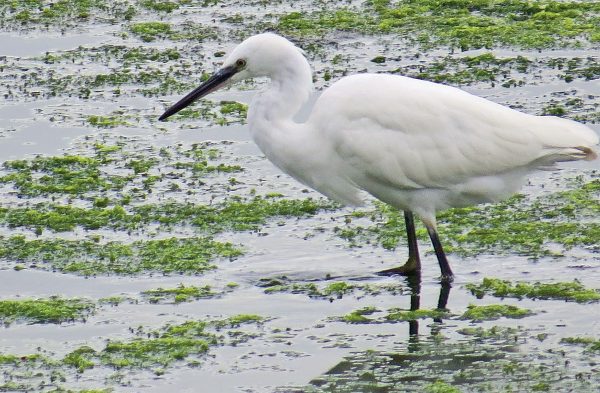
Photo courtesy Eamonn Ryan.
On a casual day while walking along the River Dodder, from the Aviva Stadium up to where the Dodder merges into the Grand Canal and where there is a confluence of the Dodder and the River Liffey, I arrive at the back of O’Rahilly House in Ringsend.
Many birds meet in the pursuit of finding fish, insects and frogs. One bird that can be seen wading through the shallows when the tide is out is the Little Egret.
The Little Egret is a small snow-white heron that is a rather recent arrival to Irish waters. They first began breeding in Ireland in 1997 in Co.Cork and have since spread through the east coast of Ireland.
The Little Egret is the exotic cousin to the native Grey Heron and they were once found mostly on the Mediterranean and along the coasts of north Africa.
From a distance one might think he has spotted a mere plastic bag or a common gull, but when the creature comes to life, with its long, gangly grey legs and snow-white plumage, they see a veritable ballet dancer of the waters who, in full movement, has elegance as it takes flight. They have since spread north and have even been counted as far north as Iceland.
The Egret often fishes next to the Grey Heron along the banks of the Dodder outside O’Rahilly House where in a flurry of activity they rush to-and fro trying to catch eels, small fish or frogs in the shallows of the water, while contending with aggressive, marauding Heron Gulls.
At least six Little Egrets have been noted recently to fish along Ringsend Bridge from the Shelbourne Stadium along the Dodder and up to where the Dodder meets the Liffey. One passerby said to his friend in curiosity: “What bird is that? It’s not a seagull, it’s not a heron!” Perplexed and intrigued, they were surprised to have heard that the bird is a new arrival, here to stay and increase in the future ahead.
Such a bird will most likely be found in more of our local parks and perhaps indeed take up residence within Herbert Park next to our long established Grey Herons!
By Robert Fullarton



